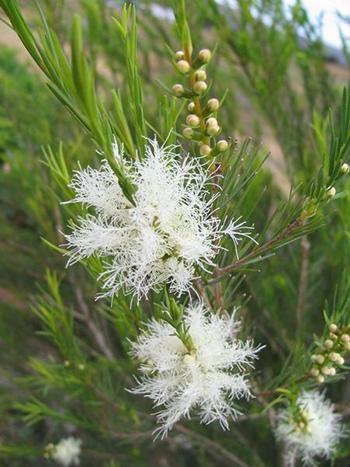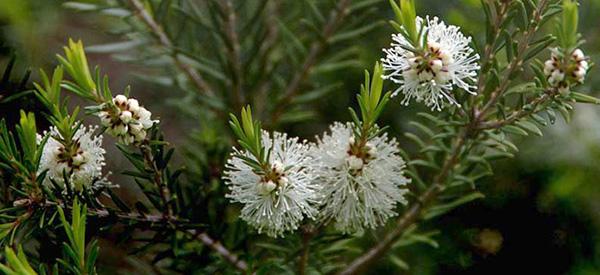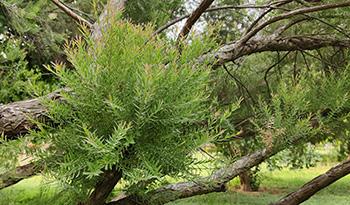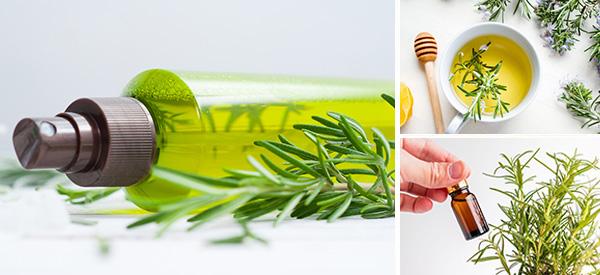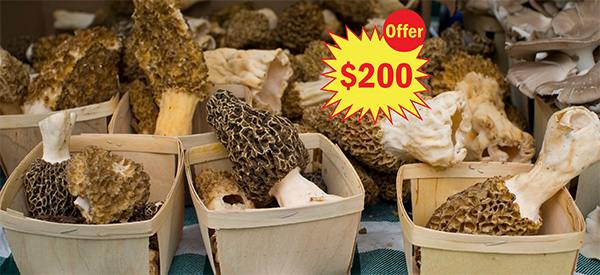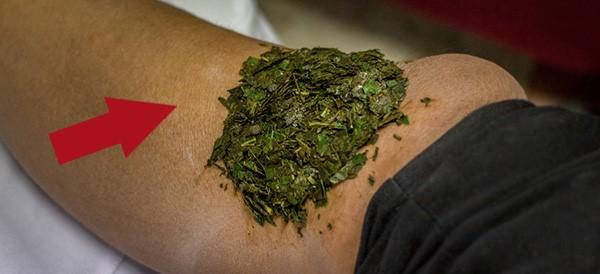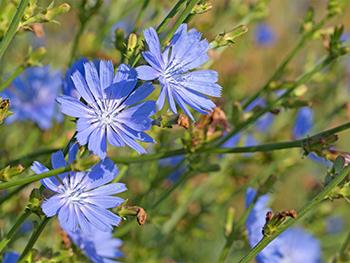
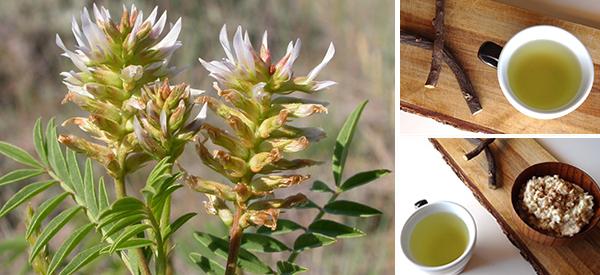
The Plant That Is Sweeter Than Sugar And Helps People With Diabetes
POSTED AUGUST 16, 2021 BY CRISSY JOSHUA IN ALL ARTICLES, BACKYARD PLANTS, HOUSEHOLD REMEDIES, RECIPES12
Licorice root is an ancient medicinal remedy that can be traced back to multiple societies including ancient Egyptians, Chinese, Greek, and Middle Eastern. Historically, it was used to treat digestive and stomach complaints and upper respiratory problems. In more recent years, scientists have begun researching whether it can help people with diabetes too.
Licorice root can be used for flavoring and as a sweetener. That’s because the sugar in the root is a substance 50 times sweeter than sugar and it also has its own distinctive flavor. Let’s look at how licorice root can help people with diabetes and other health benefits it provides first. Then I will show you two ways you can use licorice root and their recipes: licorice root-infused oatmeal and as a tea.
Medicinal Benefits Of Licorice Root
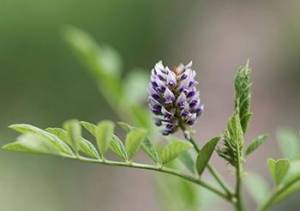
Like I mentioned, licorice root has become increasingly popular in studies related to diabetes. One of the most notable was conducted by a German research group at the Max Planck Institute for Molecular Genetics. They found that licorice root contains natural substances called amorfrutins that reduce blood sugar levels. These amorfrutins also prevent fatty liver, which often arises in people with diabetes. However, the level of amorfrutins found in licorice root might not be high enough to actually replace conventional treatment.
Many other studies have also been conducted on licorice and diabetes and found that it decreases blood glucose levels and also has the ability to decrease weight gain. When people take insulin, weight gain is often a common side effect. What’s more, being overweight increases the risk of developing type 2 diabetes in the first place so maintaining a healthy weight is great for prevention.
Licorice root can also help treat or relieve a number of other medical conditions including:
Liver disease
- Gum disease
- A sore throat
- Gastrointestinal problems
- Hot flushes during menopause
It is also highly nutritious and contains:
- Vitamin A
- Vitamin C
- Vitamin E
- Over 300 flavonoids
Related: An Ingenious Way to Stockpile Prescription Medicines, Including Insulin (Video)
How To Make Licorice Root Infused Oatmeal
Substituting sugar for licorice root in oatmeal makes for a lovely breakfast (or snack!).
The licorice root gives it a distinctive flavor as well as adding sweetness.
Ingredients
- 1 Licorice root (maximum weight = 0.42 oz/12 grams)
- ½ Cup of milk (plant-based or animal)
- ½ Cup of water
- ½ Cup of oats
Utensils
- Small pan
- Fine-mesh strainer
- Container/bowl large enough to catch the milk/water from the strainer
- Chopping board
- Wooden spatula or spoon
- Small knife
Method
- Weigh a piece of licorice root and choose one that is approximately 0.42 oz / 12 grams, otherwise cut/break one to size.
- Cut your chosen root into two by making an indent with your knife by cutting down with force. You probably won’t be able to cut it all the way through with the knife so snap it in half with your fingers along the incision.
- Put ½ cup of milk and ½ cup of water in your pan along with your licorice root. Turn the heat to medium and leave it for 5 minutes.
- Turn the heat up and wait until you have a gentle simmer and keep it going for another 5 minutes.
- When the 5 minutes is up, take it off the heat and strain your mixture so that you retain the milk and water and you can discard the licorice root.
- Add your milk/water back into the pan and also add your oats now. Give it all a stir and put on low-medium heat. Cook for approximately 5 minutes and stir the oats frequently.
If you like your oatmeal runnier you can take it off the heat whenever it’s at the consistency you want. Likewise, if you want them thicker, you can leave them on longer according to your preference.
If it’s hot where you are, you can always make overnight oats by infusing the milk/water with the licorice root (as per steps 1-5) and letting it cool before pouring it over oats and covering it. Then leave it in the fridge and have it the next day.
How To Make Licorice Root Tea
You don’t have to use licorice root in a food recipe to benefit from its goodness. You can always make a simple licorice root tea, which has been used for millennia.
Ingredients
- 1 Licorice root (maximum weight = 0.42 oz / 12 grams)
- 1 Cup of water
Utensils
- Small strainer
- 2 Mugs
- Chopping board
- Small knife
Method
- Boil enough water for a cup of water or more to fit your mug.
- Weigh a piece of licorice root and choose one that is approximately 0.42 oz / 12 grams, otherwise cut/break one to size.
- Cut your chosen root into two by making an indent with your knife by cutting down with force. You probably won’t be able to cut it all the way through with the knife so snap it in half with your fingers along the incision.
- Put your licorice root into your mug and pour the boiled water over it. Let it steep for 5 minutes.
- Remove the licorice root by straining the mixture into another mug (if you have a small strainer). Otherwise, you can use a fine-mesh strainer and pour the water and root into it, catching the licorice root tea in another container and transferring this to a mug, ready to drink.
You can also follow these instructions and use the licorice root to sweeten your favorite type of hot beverage such as black tea by letting it steep with your regular tea and then straining everything.
How Much Licorice Root Should You Take Every Day
The maximum amount of licorice root that you should use every day is 0.42 oz / 12 grams. You can take this one time a day or split your root quota in half and take it morning and evening.
Licorice root has two main potential gains for people with diabetes: by lowering blood sugar levels and as a dietary sweetener. While it’s not recommended to replace the medication for diabetes with licorice root, including it in your diet can have many beneficial side effects on your health and it gives you a new, sweeter sugar alternative.
A Word Of Caution
Licorice root contains glycyrrhizin, which is the component that also makes licorice root sweet. It has many positive attributes such as being an antioxidant, anti-inflammatory, and having antimicrobial properties. However, it is also this same glycyrrhizin that can have negative effects.
Large doses can lead to glycyrrhizin accumulation and this has been linked to the following most noted outcomes:
- Low potassium levels
- High blood pressure
- Abnormal heart rhythms
It can also have an adverse effect on certain medications including:
- Blood pressure medications
- Cholesterol medications
- Diuretics
- Blood thinners
- Nonsteroidal anti-inflammatory drugs (NSAIDs)
You may also like:
9 Natural Remedies for High Cholesterol and Blood Pressure
Erratic Blood Sugar? Never Eat This Veggie (Video)
How To Make Your Own Natural Sweetener for Diabetes
Foods and Herbs to Avoid When You Have Diabetes
9 Natural Remedies that People with Diabetes Will Find UsefulPlease Spread The Word – Share This Post
12 Comments
BARB POSTED AUGUST 16, 2021 4:30 PMWhere can one buy licorice root, or buy a plant? Never seen it (only seen it in supplements)Reply
BONNI TUTTLE POSTED AUGUST 17, 2021 2:39 PMTry AmazonReply
MARCHAEL JOHNSON POSTED AUGUST 16, 2021 4:47 PMThanks for that very valuable information. I have HBP and take HCT (a diuretic) daily. Many herbal teas I buy include licorice root. I noticed an unusual feeling when I drink these teas so I’ve ditched them. Now I know why. By the way, I’m enjoying “The Lost Book Of Herbal Remedies.”Reply
THE LOST HERBS POSTED AUGUST 17, 2021 6:22 PMHi Marchael,Thank you for sharing this with us.
We are glad to hear that you enjoy “The Lost Book of Herbal Remedies”.Many blessings and good health!Reply
SUSAN POSTED AUGUST 16, 2021 5:18 PMApologies if this is an idiotic question, but how much does licorice root or a tincture thereof taste like licorice candy? Alternative sweeteners are wonderful, and the health benefits look great, but many people don’t care for the flavor of typical black licorice or anise.Reply
THE LOST HERBS POSTED AUGUST 24, 2021 6:45 PMHi Susan,Licorice root itself is very mild and a little bitter, so when we’re talking about the taste of licorice candy, what we’re really talking about is the flavor anise and fennel. It’s a polarizing taste for sure.Many Blessings and good health!Reply
RICHRENO POSTED AUGUST 17, 2021 7:35 AMLactuca Virosa is NOT a member of the lettuce family (there is no such family — but maybe lettuce genus…). It is a member of the largest plant family: Aster (Asteraceae / Compositae) / Sunflower family. Composite because the flowers are in a “head,” a composite. Nearly all heads have many single flowers. For example, the sunflower is not _one_ flower, it is a head or composite of well over 200 individual flowers: each seed is the result of / represents ONE flower. Additionally the yellow petals around the perimeter of the head are singular flowers, but are infertile: they never make a seed.And the “headline” plant, American licorice, the genus is Glycyrrhiza. It is a native plant common on western grasslands and the Great Plains prairie. Whenever someone sees irregular flowers like in the photo, think bean / pea (Fabaceae) family. Plants in the mint family look like that but anytime you a plant with a square stem, think mint family (Labiatae ̶ depending on which plant key one uses). There is only one other family (in the US) with square stems and another couple families with “sorta” square stems). Next time you go to the grocery store or your garden, look at the stems — and you will know to which family it belongs. And speaking of mint family members, shame on you (and others) for promoting catnip (Nepeta sp): look closely at the flowers. They are extremely annoying non-native plants that makes life miserable for those of us who go dog walking, walking in open areas, etc.; those damn seeds stick to almost anything; so leave your hairy (labs, German short-hairs, etc., are OK) dog home or avoid catnip infested areas. It often takes me 20-30 minutes to pull out the seeds. Pulling each seed off my dogs’ coats is completed more quickly by using a tweezers to pull each seed out. Fortunately, the seeds sometimes stick to each other or attach to them and me in seed “clumps.”That picture of fennel sure looks like dill… I am use to seeing fennel with whitish flowers; but both plants look alike when ya get right down to it. Both are in the carrot or cabbage family: Apiaceae. As can be seen, common names of plants and their families are quite variable, but their scientific family name is nearly always determinate — unless plant taxonomists have a Eureka moment or discover here-to-fore unrecognized similarities or differences which causes argument about the “real” scientific name. Relative to dill and fennel, they are both incredibly valuable plant, And without dill, dill pickles (and carrots) would just not taste the same.My bottom line take-away is it would be helpful to consult a botanist of a plant key (or consult Wikipedia) for published articles. I often find inaccuracies that probably only bother plant nerds like me. One final point, the second Latin binomial (scientific name) is not capitalized, but the genus is: Genus species (and sometimes var. for a species variety — not quite their unique species but just a ‘kissin’ sibling. And if you really want to meet a nerd standard, the Genus species is always italicized — or underlined.Reply
THE LOST HERBS POSTED AUGUST 17, 2021 6:24 PMHi Richreno,Thank you so much for your continuous support.
Your feedback is highly appreciated and will help us to improve our ability to serve you and other users of our website.Many blessings and good health!ReplyKATHY KILGORE POSTED AUGUST 28, 2021 4:24 PMWhat a good read. Thanks for the lessons….my cotton breeder/
botanist husband agrees…Reply
JAMES POSTED DECEMBER 21, 2021 6:03 PMI want my digital copy and free pamphlets give me a damn call numberReply
THE LOST HERBS POSTED DECEMBER 21, 2021 6:18 PMHi James,Thank you for reaching out to us.
I’m sorry about this, however, The Lost Herbs does not have a call center available at the moment.Please check your personal email. I sent you an email regarding your order.Many blessings and good health!Reply
PAULINE POSTED DECEMBER 21, 2021 8:54 PMCan I steep liquorice root and use the liquid to achieve the desired sweetness? Oh and many thanks; because of this article, I realise that the rough sticks sold for a couple of pennies when I was a kid were liquorice root. They were sold as “Spanish wood” and we used to chew them on the way to school; lovely mild taste and great for cleaning teeth!Reply
Add Comment
Your email address will not be published. Required fields are marked *
Save my name, email, and website in this browser for the next time I comment.
I accept the Privacy Policy
Notify me of followup comments via e-mail. You can also subscribe without commenting.
Don’t miss out..
My newsletter is packed with the most up to date knowledge on holistic health practices and powerful natural remedies from the plants growing all around us.NameSUBSCRIBE

FOLLOW US
WE RECOMMEND
RECENT POSTS
- Nettle
- 12 Stomach-Soothing Herbs
- Mugwort Pillow for Insomnia and Anxiety
- Ramps: The Most Delicious Signs of Spring
- Curly Dock
- My Seven Favorite Herbs for the Allergy Season (and Asthma Too!)
- 10 Medicinal Herbs to Plant in Early Spring
- Spring Tea Recipe
- Slippery Elm
- How To Quickly Cool Any Fever
- Antiviral Herbal Mulled Cider
- Herbs to Boost Oxytocin, the Happiness Hormone
- Yerba Santa
- Amish Cough Syrup Recipe
- 10 Herbal Remedies to Delay Aging
- Fat Burning Tea
- Amaranth
- Fresh or Dried Herbs?
- How to Get Rid of Warts With Duct Tape
- Homemade White Cell Boosting Juice
CATEGORIES
The Healing Power of Backyard Plants at Your Fingertips
Follow us
